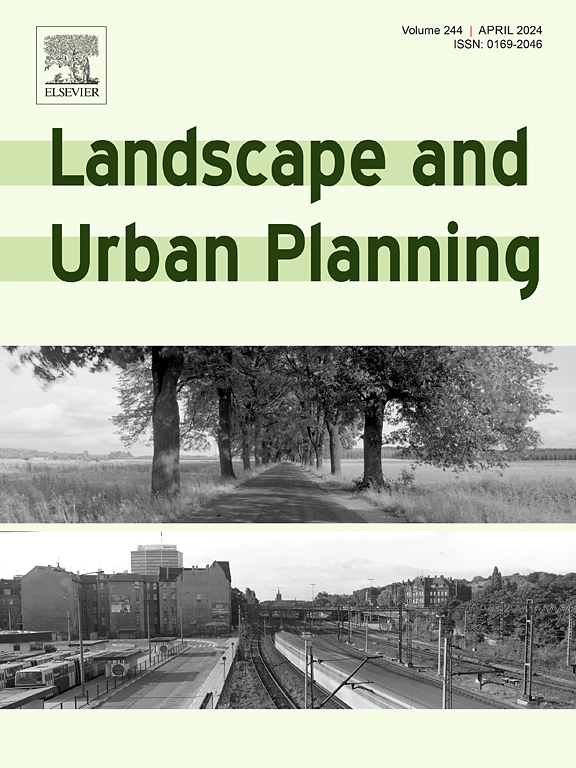蜜蜂的存在通过减少野生蜜蜂的觅食宽度而重构了传粉网络,而不是景观环境
IF 7.9
1区 环境科学与生态学
Q1 ECOLOGY
引用次数: 0
摘要
野生蜜蜂种群受到栖息地破碎化和土地利用变化的威胁,但很少有发展规划考虑到资源竞争。然而,管理蜜蜂(Apis mellifera)经常被养蜂人引入居民区,给野生蜜蜂带来潜在的竞争压力。我们在美国科罗拉多州柯林斯堡的近郊自然保护区对蜜蜂与植物的相互作用进行了采样,并模拟了授粉网络和蜜蜂觅食宽度对道路和自然面积密度、保护区规模和背景蜜蜂丰度的响应。主要发现有四项:(1)蜜蜂在传粉网络中占主导地位,占记录的蜜蜂与植物相互作用的26%。蜜蜂的高频率降低了网络的模块化,但储备规模、自然面积密度和季节性不能预测网络结构。(2)蜜蜂频率随道路密度的增加而增加,随自然面积的增加而下降,表明较高的居住密度驱动了蜜蜂压力。(3)蜜蜂与野生蜜蜂访花模式存在明显的生态位重叠,切叶蜂科和抹灰蜂科的觅食宽度随着蜜蜂频率的增加而减小。(4)有害杂草(如惊魂草和胡桃花)被野生蜜蜂访问的比例很高,被认为是传粉网络的“枢纽”和“连接器”。我们的结论是,蜜蜂的存在改变了蜜蜂-植物网络的拓扑结构,优先创建自然区域保护区以最大化非不透覆盖的密度可能会间接减少与蜜蜂的竞争。保护工作者可以通过支持野生蜜蜂觅食和蜜蜂不访问的花卉物种来抵消蜜蜂的影响,特别是在蜜蜂不是本地的地区。本文章由计算机程序翻译,如有差异,请以英文原文为准。
Honeybee presence restructures pollination networks more than landscape context by reducing foraging breadths of wild bees
Wild bee populations are threatened by habitat fragmentation and land-use change, but few development plans consider resource competition. However, managed honeybees (Apis mellifera) are often introduced to residential areas by hobbyist beekeepers, placing potential competitive pressure on wild bees. We sampled bee-plant interactions from natural reserves across the peri-urban landscape of Fort Collins, Colorado (U.S.A.) and modeled pollination networks and bee foraging breadth in response to road and natural area density, reserve size, and background honeybee abundance. Four key findings emerged: (1) honeybees dominated pollination networks, representing 26% of recorded bee-plant interactions. High frequencies of honeybees reduced network modularity, but reserve size, natural area density, and seasonality did not predict network structure. (2) Honeybee frequency increased with road density and declined as natural area cover increased, indicating that higher residential densities drive honeybee pressure. (3) Patterns of floral visitation by honeybees and wild bees indicate substantial niche overlap, and foraging breadths of Megachilidae (leafcutter bees) and Colletidae (plasterer bees) declined as honeybee frequency increased. (4) Noxious weed species (e.g., Convulvulus arvense and Carduus nutans) had high rates of visitation by wild bees and were identified as both pollination network ‘hubs’ and ‘connectors’. We conclude that honeybee presence alters topology of bee-plant networks, and prioritizing creation of natural area reserves to maximize density of non-impervious cover may indirectly reduce competition with honeybees. Conservation practitioners can offset honeybee effects by favoring floral species that support wild bee foraging and are not visited by honeybees, especially in regions where honeybees are not native.
求助全文
通过发布文献求助,成功后即可免费获取论文全文。
去求助
来源期刊

Landscape and Urban Planning
环境科学-生态学
CiteScore
15.20
自引率
6.60%
发文量
232
审稿时长
6 months
期刊介绍:
Landscape and Urban Planning is an international journal that aims to enhance our understanding of landscapes and promote sustainable solutions for landscape change. The journal focuses on landscapes as complex social-ecological systems that encompass various spatial and temporal dimensions. These landscapes possess aesthetic, natural, and cultural qualities that are valued by individuals in different ways, leading to actions that alter the landscape. With increasing urbanization and the need for ecological and cultural sensitivity at various scales, a multidisciplinary approach is necessary to comprehend and align social and ecological values for landscape sustainability. The journal believes that combining landscape science with planning and design can yield positive outcomes for both people and nature.
 求助内容:
求助内容: 应助结果提醒方式:
应助结果提醒方式:


